Healthcare mobile apps are shaking up patient care big time, but let’s be real—they gotta play by the privacy rulebook. HIPAA compliance? Yeah, it isn’t just ticking a legal box—it’s a must-do for locking down that sensitive patient info.
Here at ScriberJoy, we get it—the hurdles developers jump to craft secure healthcare apps aren’t small. This guide? It’s your roadmap through the need-to-know steps to ensure your app checks the HIPAA boxes, protecting both your users and your biz.
Understanding HIPAA Compliance for Mobile Apps
The Essence of HIPAA
HIPAA, the Health Insurance Portability and Accountability Act is-let’s be honest-the cornerstone of patient privacy in the U.S. Passed in ’96, it’s the big kahuna, the gold standard in safeguarding sensitive patient data. For mobile app developers diving into healthcare, HIPAA compliance isn’t just a nice-to-have-it’s fundamental, period.
Key Components of HIPAA Compliance
What are we really talking about here? Protecting Protected Health Information, or PHI (because acronyms are fun). We’re talking data that ties directly to a person-names, addresses, medical records, insurance details… the whole shebang. The Department of Health and Human Services gives us 18 identifiers that scream PHI.
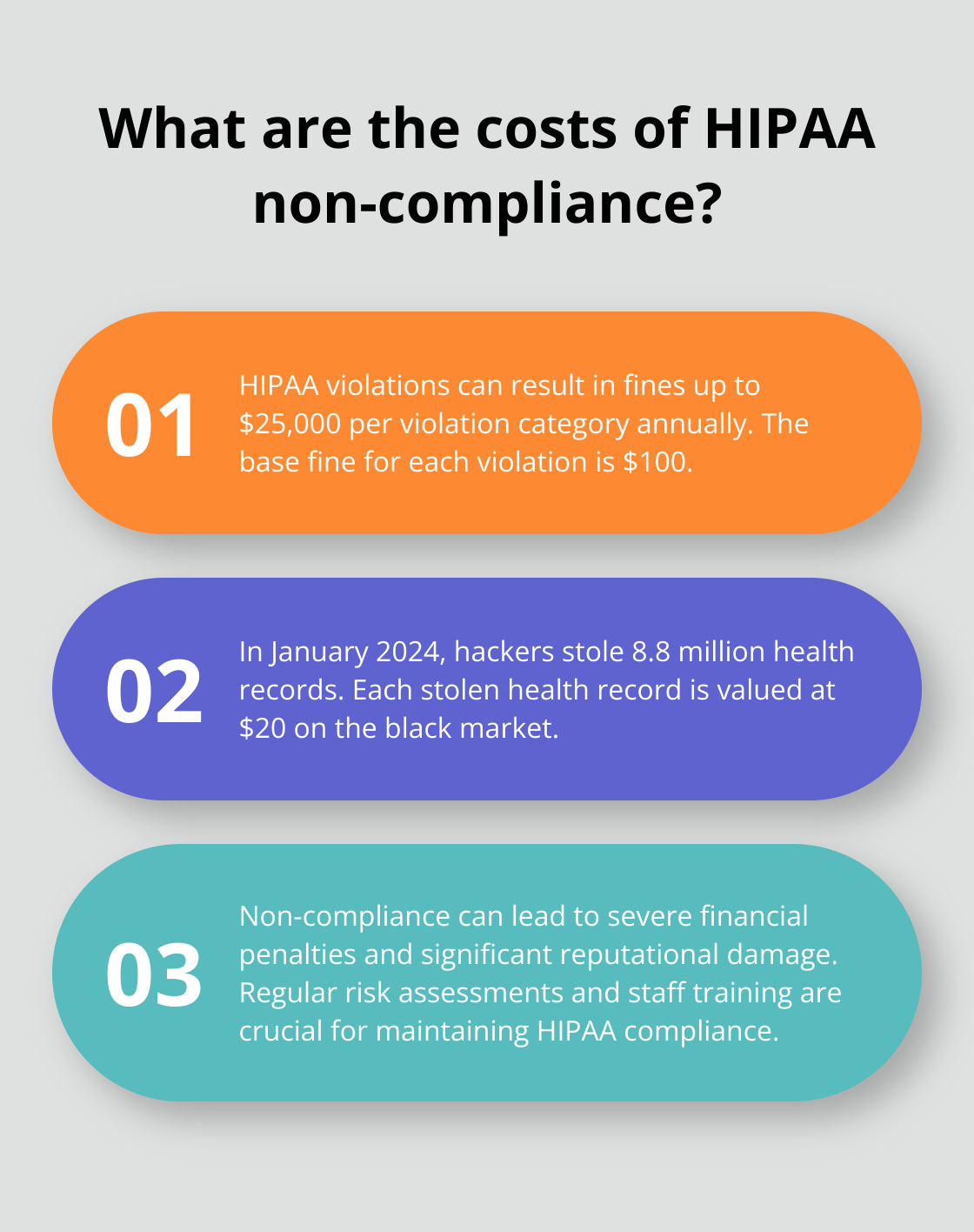
So, how do you nail HIPAA compliance? Better have some serious security measures in place:
- Data encryption at rest and in transit (AES-256 encryption, folks)
- Super strict access controls
- Only the cool kids (authorized personnel) get to peek or tweak the PHI
The Cost of Non-Compliance
Ignoring HIPAA? Big yikes. The Office for Civil Rights (OCR) can slap fines on you-up to $25k per violation category, every year. Oh, and the base fine? $100 a pop. But honestly, the fines are just the tip of the iceberg. Imagine the PR nightmare if there’s a data breach.
Check these out:
- January 2024-hackers snatch 8.8 million health records
- Each stolen record is worth $20 (yep, more than your average stolen credit card)
If that doesn’t scream “get compliant,” I don’t know what does.
Ongoing Compliance Efforts
HIPAA compliance? Think of it like a never-ending story. It needs constant vigilance and regular security updates. So, what should you do?
- Routine risk assessments (yes, please)
- Multi-factor authentication (absolutely)
- Training staff on HIPAA-not optional
Plus, if you’ve got third-party vendors dealing with PHI, you need those Business Associate Agreements (BAAs). These docs spell out who’s doing what to protect that info.
The Broader Impact of HIPAA Compliance
HIPAA compliance-it’s like getting your ducks in a row for long-term success. Put patient privacy and data security front and center, and you’re not just avoiding penalties; you’re building trust. This trust can catapult your app into a reliable player in health tech, opening doors to partnerships and growth.
Next up, we’ll dive into the nitty-gritty of HIPAA-compliant mobile apps-because technical safeguards are how you meet legal standards and protect sensitive patient info to the max.
How to Implement Essential Security Measures for HIPAA-Compliant Mobile Apps
So, you want a HIPAA-compliant mobile app? You’ve got to build a digital Fort Knox around patient data. This segment – buckle up – breaks down the essentials to keep your app compliant and your users’ trust levels high.
Encryption: Your First Line of Defense
Encryption’s your jam for HIPAA compliance-non-negotiable, period. We’re talking AES 128, 192, or 256-bit encryption for data lounging around (stored on devices or servers) and data making moves (transit).
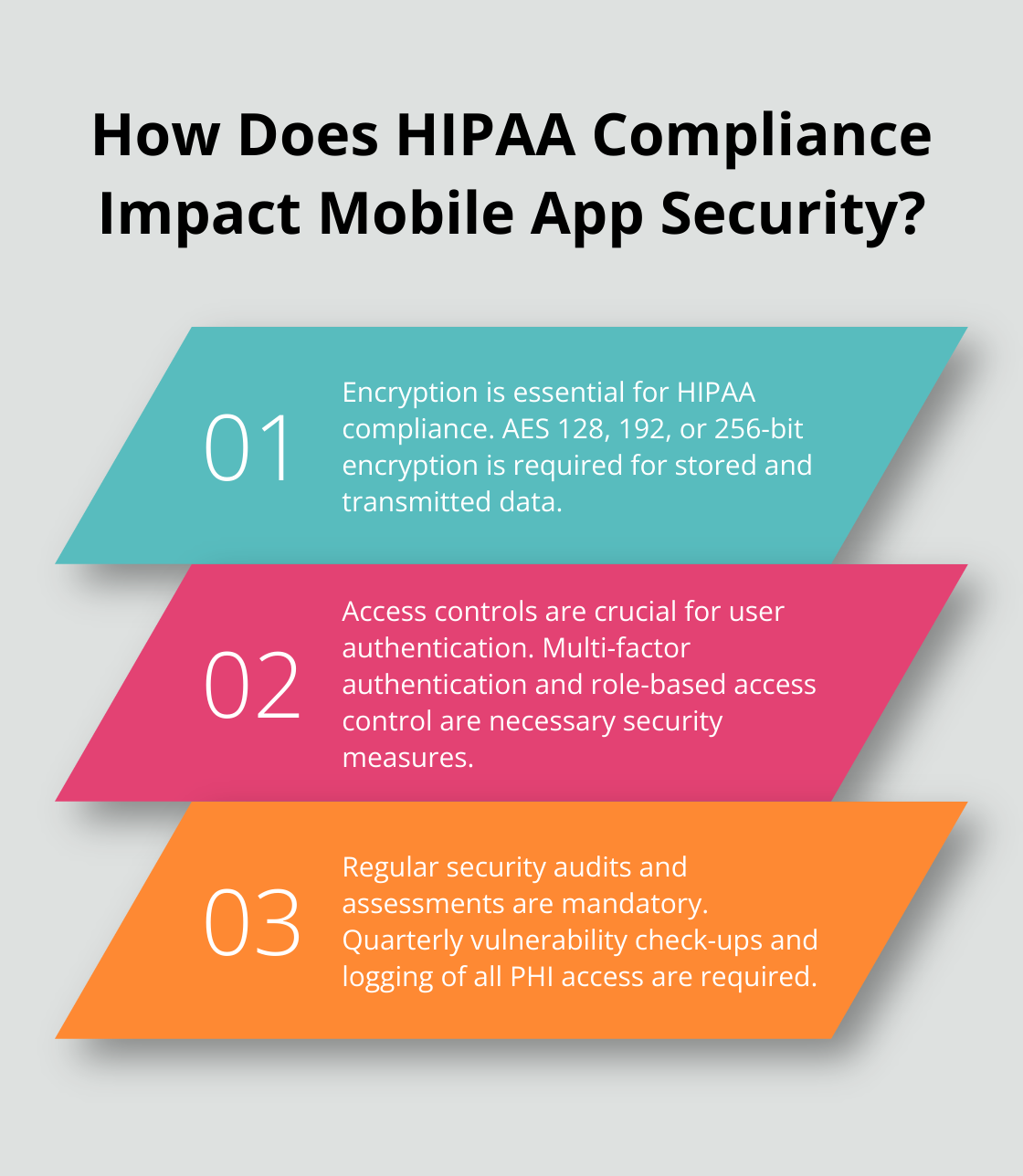
Data in transit? TLS 1.2 or higher is your roadblock for eavesdroppers. Data at rest? Dive into file-level or database encryption. iOS folks can jump on the built-in Data Protection API, while Android peeps? Check out the Keystore system.
Access Controls: Gatekeeping User Entry
Cue the gatekeepers-robust user authentication is key. Multi-factor authentication (MFA) isn’t just a buzzword; it’s your shield. Protects patients, shields organizations-a secondary layer of security.
Role-based access control (RBAC) is must-have. Nurses, docs, admins-they all get their own backstage pass. Plus, automatic logouts after 15 minutes of snooze mode? Yes, please. And scrap those lame passwords-“password123” is out.
Audits and Assessments: Maintaining Vigilance
Security audits – they’re not just pretty words for HIPAA. Quarterly vulnerability check-ups, at least (monthly’s better). Tools? Think OWASP ZAP or Burp Suite to hunt vulnerabilities.
Log the heck out of all PHI access. Who, when, why? Record it. This data? Gold during audits and for sniffing out weird patterns signaling a breach.
Don’t skip penetration testing. Ethical hackers are your friends-better they find the gaps than the bad guys.
Continuous Monitoring and Updates
HIPAA compliance isn’t a one-and-done. Tech shifts – threats evolve. Keep up with updates, patch vulnerabilities without delay, and train your crew on the latest security practices.
Third-Party Integration Security
Third-party services? They need HIPAA love too. Get those Business Associate Agreements (BAAs) signed, sealed, delivered. Regular audits of these integrations keep the entire app ecosystem clean.
Nail these actions and you’re not just compliant – you’re a trust titan in healthcare apps. With the security fortress in place, next up – let’s deep dive into best practices for HIPAA-compliant app development. Stay tuned.
How to Build a Bulletproof HIPAA-Compliant App
Ironclad Data Storage and Transmission
You want your app’s data storage and transmission to hold up like Fort Knox. AES-256 encryption for data at rest? Absolutely. Data in transit needs TLS 1.2 or 1.3-non-negotiable. Ignore this at your own peril-a data breach costs big time.
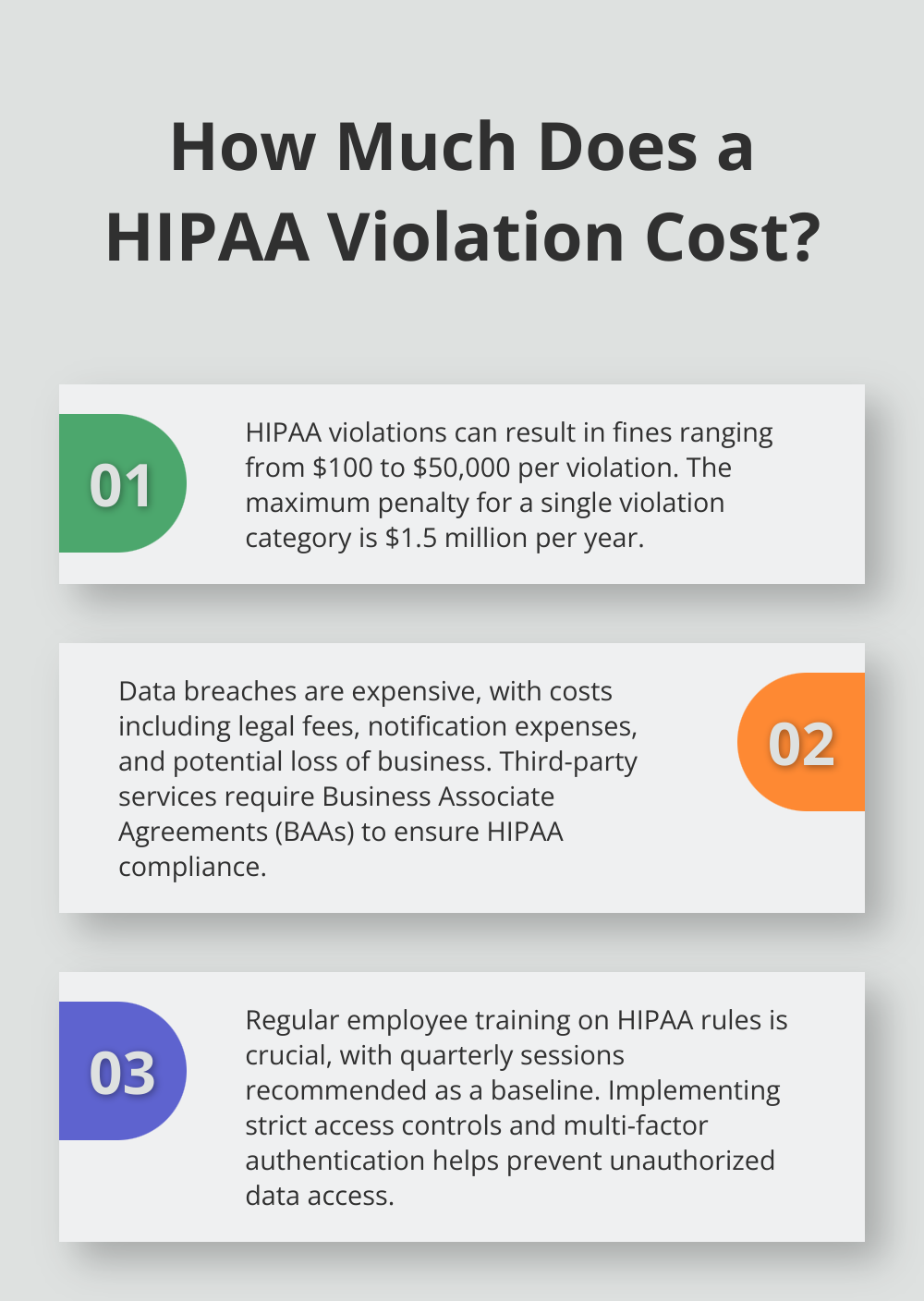
Secure backup systems? You need ’em-redundancy across multiple secure spots is the play. Pro tip? Use tokenization for the sensitive stuff. Swap out real data with a safe stand-in, keeping usability intact while dodging exposure.
Third-Party Integration Lockdown
Third-party services can be your app’s Achilles heel if not locked down. Always-repeat, always-secure those Business Associate Agreements (BAAs). A BAA is your legal handshake between HIPAA-covered entities and business buddies, covering how they’ll guard PHI. But that’s just step one. Grill any third-party service with a full security assessment before you let them in.
Turn to API gateways to oversee and vet third-party chitchats. They’re your gatekeepers, letting you slap down consistent security policies across the board. A quarterly audit of these link-ups? That’s a must.
Airtight Privacy Policies and User Agreements
Your privacy policy and user agreement aren’t mere legalese-they’re your first vanguard against misuse and mess-ups. Be as clear as a summer’s day about the data you snoop, why you’re snooping, and how you’re keeping it locked up tight.
Include HIPAA compliance and user rights talk-no skimping here. Let users easily ask for their data or demand its deletion. Often slipped under the radar: regular updates to these docs. As your app grows, so must your policies.
Trust thrives on transparency. Lay it all out in your agreements.
Continuous Security Monitoring
Build a mean system for non-stop security watch. Real-time threat sniffing, monthly vulnerability scans, and ASAP patching of the nasties you find-it’s the lineup you need.
Alerts for funky activity that screams breach attempt? Yes, please. Automate the daylights out of this process-consistency and prompt action to ward off threats.
Employee Training and Access Management
Your crew is mission-critical for HIPAA compliance upkeep. Run regular (quarterly’s your baseline) training on HIPAA rules and how to handle the sensitive bits like pros.
Adopt tight access controls under the principle of least privilege. Each member gets portals to just what they need to get the job done, nothing more. Multi-factor authentication at all access points, and run access log audits to spot anything fishy.
For airtight HIPAA compliance, developers should ride a structured checklist, ticking all data security and privacy boxes.
Final Thoughts
Building a HIPAA-compliant mobile app… what’s the play here? You need more than just lines of code – we’re talking fortress-level encryption, ironclad access controls, and audits. Regular ones. Like, no resting on laurels when stiff fines are lurking in the shadows. Tech’s a wild ride; one minute you’re compliant, next minute you’re not. So yeah, keep an ear to the ground and update pronto if you wanna keep users all warm and fuzzy with trust.
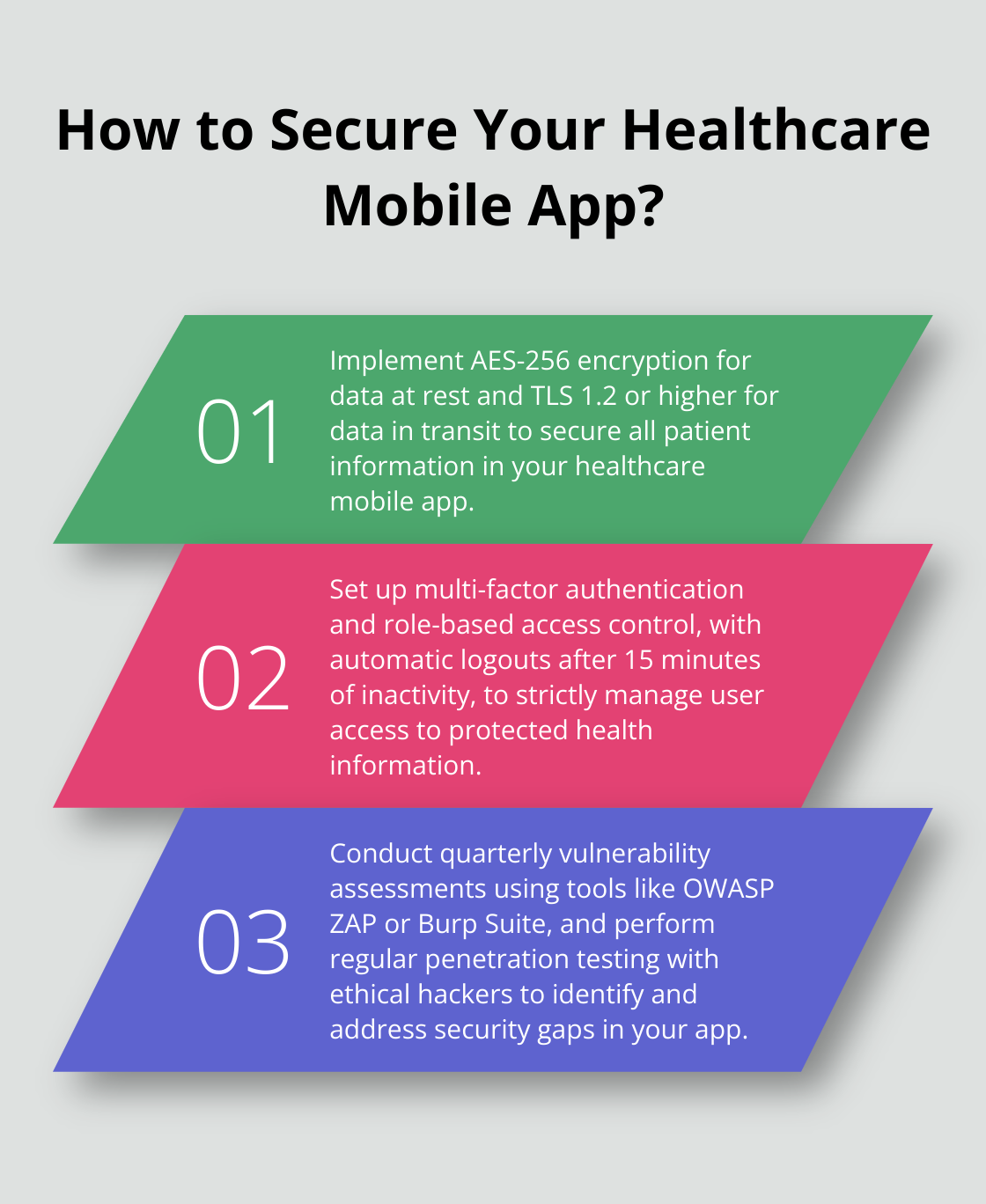
HIPAA compliance isn’t just a box to tick – it’s a golden ticket. Imagine the clout you gain, the alliances you can forge. You’re the dependable rockstar when it comes to safeguarding sensitive patient data. Over at ScriberJoy, we’ve got a handle on why HIPAA’s a big deal in health tech.
Our medical transcription software is where AI meets human savvy – accuracy that’s on point, with HIPAA standards in its DNA. We’re all about freeing healthcare providers to do what they do best: care for patients while we handle the documentation, clean and stealthy-like. HIPAA compliance for mobile apps, it’s not just obeying the letter of the law, it’s a nod to patient privacy and a pledge to the greater good of a secure healthcare ecosystem.
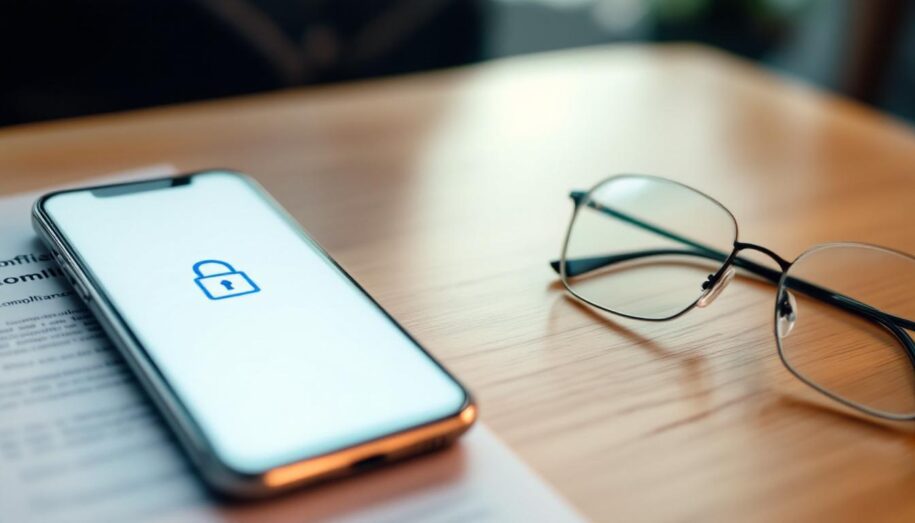
Leave a Reply
You must be logged in to post a comment.